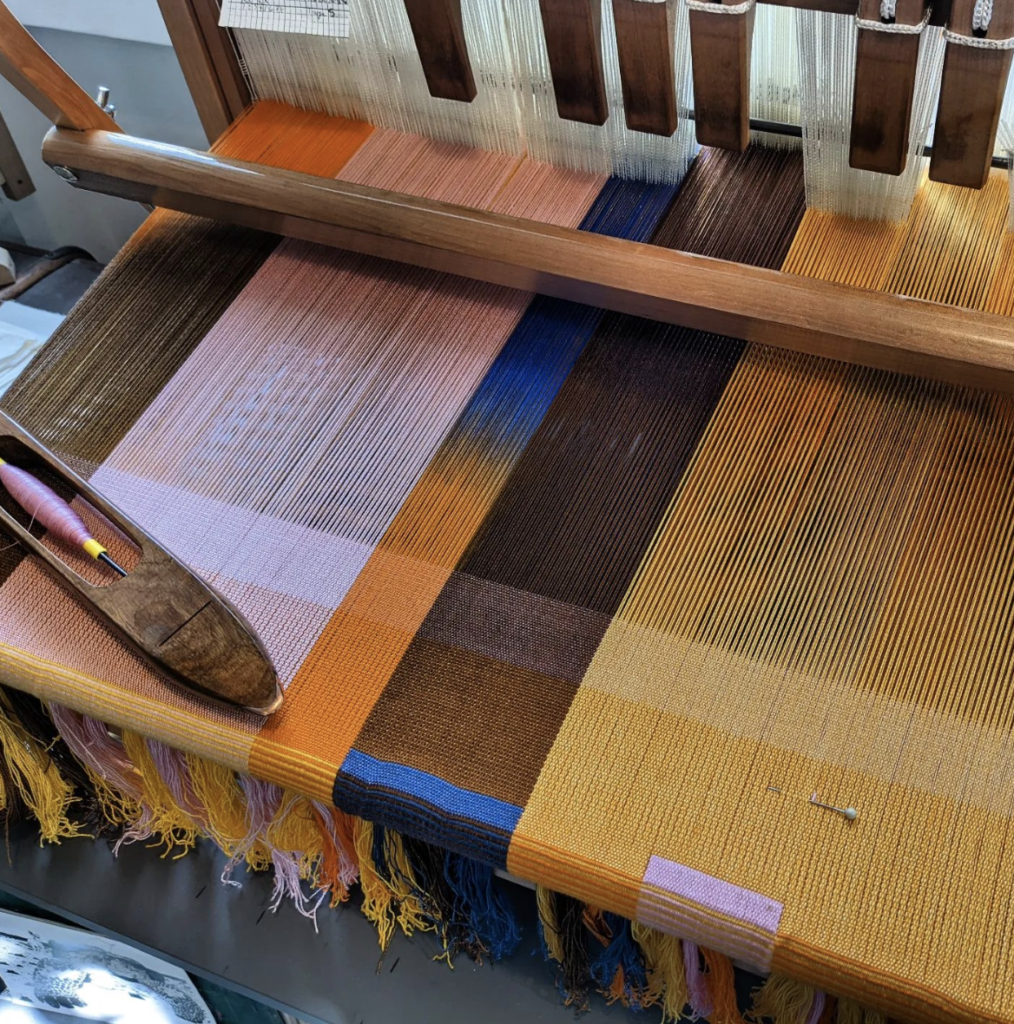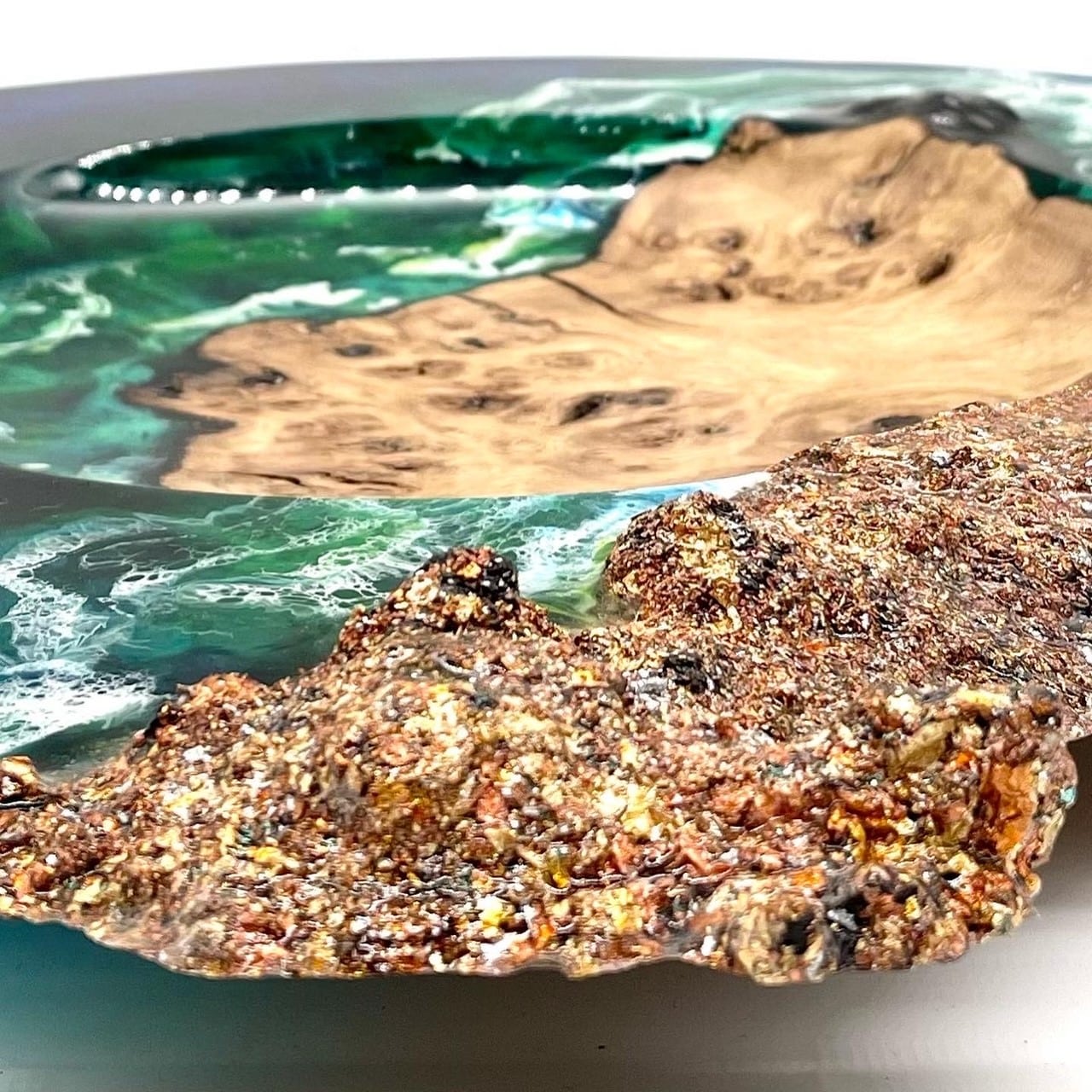It has been an exciting couple of years for weaver Dalia James — from being selected for the Crafts Council’s Hothouse programme, to Cubitts Lens Cloth Initiative and Toast New Makers, before being awarded a place at Cockpit in September. Here she shares some insight into how she evolved her practice to where it is now, and some of the key moments along the way.
Did you always know this was what you wanted to do?
Not at all. Actually I had a place at Goldsmiths to study History and Anthropology but took a gap year after college, and by a twist of fate I ended up at Loughborough studying Woven Textiles. I didn’t study art at school, but I come from a creative family. My mum was always drawing and painting with us. She met my dad at Cordwainers College, he studied leatherwork and spent many years making bag samples, including those for Lulu Guinness and Anya Hindmarch early in their careers. So during my gap year I decided to do something creative and enrolled in a life drawing class at the local adult education centre. That led to a Fine Art AS-Level, and eventually an Art Foundation at Camberwell.
So how did you get into weaving?
My first experience of weaving was at university. I actually started on the printed textiles course, and we had to walk through the weavers’ area to get to ours. I soon realised that I was more interested in what they were doing, transposing a design into 3D. I also felt like printed textiles was pushing me towards repeated patterns and florals, which really wasn’t for me — I wanted to do something more conceptual.
When did you decide to focus on artworks?
When I first left university, I felt pressured to go into homewares, as it seemed like that was what everyone was doing. It was while I was on the Crafts Council Hothouse programme in 2019 that I decided I really wanted to explore weaving more as an artistic endeavour, to focus on creating work that didn’t necessarily have a function. My cohort leader, Caroline, was a real help in saying to me “just do it.” I really needed that push because there aren’t many other weavers doing woven artworks, besides Margo Selby and Ptolemy Mann. Caroline helped me to see that I should do what is right for me, and she introduced me to the concept of a ‘portfolio practice,’ so I can focus on my artistic practice and, in time, explore teaching and retail opportunities as well.
What advice would you give to someone just starting out?
It’s hard to get into this mindset, but try to have blinkers on and don’t be too fixated on what your peers are doing. If you have something you’re really passionate about, just keep plugging away at it, that’s essentially what I did. It’s taken a lot longer than I thought, I didn’t think it would be a decade later that I’d find success. But it’s not a race. I shared a studio this year with the Cockpit Make It awardees and I would often say to them how important it is to take your time. They are already ahead of where I was at their age, and you don’t have to choose just one thing.
Where do you get your inspiration?
Once I decided to really focus on artworks, I took inspiration from the churches and basilicas in Tuscany after a visit to Florence where my twin sister was living at the time, and that became the starting point for my first series. I’m influenced by architecture, geometry, early 20th century art and design movements like Dada, De Stijl and the Bauhaus school. People always ask if I like Annie Albers, and I do, but actually for me the greater influence is Josef Albers — his theories on colour in particular. His main idea is that no two people see colour in exactly the same way, colour is probably the most fluid medium in art. This is one of the reasons dip-dyeing my warps is a central part of my practice.
What materials do you use?
Early on, I fell in love with silk and I’ve continued using it. You have to wrestle with the environmental impact of your work, and at the same time with artistic pieces there’s a trade-off with staying true to your philosophy. My work is more about colour and geometry than texture. You can’t produce silk in this country, so I source mine from a company in Switzerland that uses hydro-electric power to spin the fibre into yarn. I also work with yarns that are better for the environment like bamboo and SeaCell (which is a combination of seaweed and Lyocell).
Can you tell us more about your dip-dye technique?
My process is to dip sections of warp into the dye bath, so it gives you an ikat effect, but via a different technique. With ikat you would bind the warp in sections and submerge the entire warp, whereas with my technique you only submerge the sections of the warp that you want to dye. I started using this technique at university as it’s a good way to try lots of different colourways on the same warp. I started using it as a technique in its own right for my artworks as I am interested in the point where two colours merge and how individuals see those sections.
What are you working on right now?
Today I’m just finishing a piece for Collect 2023. I’ll be showcasing two new pieces of work via Cavaliero Finn Gallery, along with a tryptic I created last year. They’re all ‘Untitled’ — I can never think of names!
—
Dalia James will be exhibiting at Collect 2023 in March, with works on sale via Cavaliero Finn Gallery (prices start from £2,500). Later this year she is planning a small batch of 10 smaller ‘off-loom’ pieces, which will be around £300. Follow @daliajamesstudio or sign up to her mailing list for updates.
To receive stories from Cockpit straight to your inbox, Sign up to our newsletter or follow us on Instagram @cockpitstudios.











